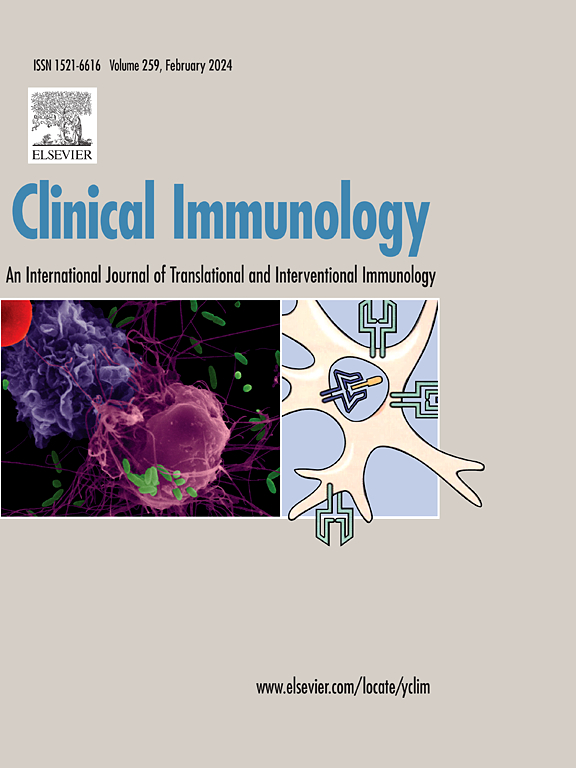igg4相关疾病的动物模型。
IF 3.8
3区 医学
Q2 IMMUNOLOGY
引用次数: 0
摘要
免疫球蛋白g4相关疾病(IgG4-RD)是一种以多器官炎症和进行性纤维化为特征的系统性自身免疫性疾病。它几乎可以影响任何器官,并可能导致严重的临床后果。尽管最近在开发动物模型方面取得了进展,但IgG4-RD的治疗选择仍然有限,免疫失调和纤维化的致病机制仍未完全了解。为了支持机制和治疗研究,近年来建立了人源化和非人源化的动物模型。然而,IgG4分子独特的生物学特性,以及人和小鼠之间的遗传差异,对传统的小鼠模型提出了重大挑战。虽然有几个模型复制了IgG4-RD的某些特征,但没有一个模型完全概括了在患者中观察到的病理特征。这篇综述批判性地检查了当前实验模型的优势和局限性,并概述了改进IgG4-RD模型系统以更好地反映人类疾病发病机制的未来方向。本文章由计算机程序翻译,如有差异,请以英文原文为准。
Animal models of IgG4-related disease
Immunoglobulin G4-Related Disease (IgG4-RD) is a recently characterized systemic autoimmune disorder marked by multiorgan inflammation and progressive fibrosis. It can affect nearly any organ and may lead to serious clinical consequences. Despite recent progress in developing animal models, therapeutic options for IgG4-RD remain limited, and the pathogenic mechanisms underlying immune dysregulation and fibrosis are still not fully understood. To support mechanistic and therapeutic research, both humanized and non-humanized animal models have been established in recent years. However, the unique biological features of the IgG4 molecule, together with genetic differences between humans and mice, present significant challenges to conventional mouse models. Although several models replicate certain features of IgG4-RD, none fully recapitulate the pathological hallmarks observed in patients. This review critically examines the strengths and limitations of current experimental models and outlines future directions for improving IgG4-RD model systems to better reflect human disease pathogenesis.
求助全文
通过发布文献求助,成功后即可免费获取论文全文。
去求助
来源期刊

Clinical immunology
医学-免疫学
CiteScore
12.30
自引率
1.20%
发文量
212
审稿时长
34 days
期刊介绍:
Clinical Immunology publishes original research delving into the molecular and cellular foundations of immunological diseases. Additionally, the journal includes reviews covering timely subjects in basic immunology, along with case reports and letters to the editor.
 求助内容:
求助内容: 应助结果提醒方式:
应助结果提醒方式:


